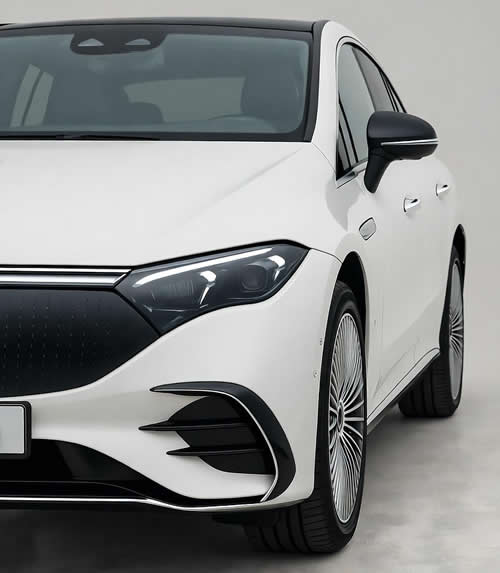
The notion that new Mercedes electric vehicles (EVs) look markedly different from their traditional gas-powered siblings is spot on—and it's been a double-edged sword for the brand. Early EQ models like the EQS and EQE sedans, launched around 2021, leaned hard into an aero-optimized, egg-like silhouette with smooth, rounded lines and minimal creases to slash drag and boost range. This "jellybean" or "melted bar of soap" aesthetic (as critics have quipped) was a deliberate pivot: Mercedes' design chief Gorden Wagener explained it as a fresh, future-forward language to signal the shift to electrification, appealing to early adopters who craved something distinctly "EV" rather than a reskinned S-Class or E-Class. It worked on efficiency— the EQS boasts a 0.20 drag coefficient, the lowest ever for a production car—but visually, it alienated traditional Mercedes buyers who prized the brand's signature angular elegance and chrome-heavy presence.
That said, Mercedes is course-correcting aggressively. Sales data showed the EQS plummeting 52% in some markets, prompting a rethink: by 2027, the lineup will ditch the stark EQ differentiation for a unified "sensual purity" philosophy where EVs mirror their ICE counterparts more closely—sharper lines, bolder grilles, taller hoods, and heritage-inspired details like illuminated three-pointed stars. Take the upcoming 2027 GLC EV: It swaps the lozenge shape for a conventional SUV profile, packing up to 483 hp, 330-kW charging, and a 39.1-inch Hyperscreen, while looking like its gas sibling from 20 feet away. The electric CLA, arriving in 2026, follows suit with subtle EV cues (like a closed grille) but a coupe-like stance that echoes its combustion twin. Even the G 580 (an electric G-Wagen) nods to rugged tradition without the blob factor.
